Low-Dose Staphylococcal Enterotoxin C2 Mutant Maintains Bone Homeostasis via Regulating Crosstalk between Bone Formation and Host T-Cell Effector Immunity
- PMID: 37552005
- PMCID: PMC10558680
- DOI: 10.1002/advs.202300989
Low-Dose Staphylococcal Enterotoxin C2 Mutant Maintains Bone Homeostasis via Regulating Crosstalk between Bone Formation and Host T-Cell Effector Immunity
Abstract
Studies in recent years have highlighted an elaborate crosstalk between T cells and bone cells, suggesting that T cells may be alternative therapeutic targets for the maintenance of bone homeostasis. Here, it is reported that systemic administration of low-dose staphylococcal enterotoxin C2 (SEC2) 2M-118, a form of mutant superantigen, dramatically alleviates ovariectomy (OVX)-induced bone loss via modulating T cells. Specially, SEC2 2M-118 treatment increases trabecular bone mass significantly via promoting bone formation in OVX mice. These beneficial effects are largely diminished in T-cell-deficient nude mice and can be rescued by T-cell reconstruction. Neutralizing assays determine interferon gamma (IFN-γ) as the key factor that mediates the beneficial effects of SEC2 2M-118 on bone. Mechanistic studies demonstrate that IFN-γ stimulates Janus kinase/signal transducer and activator of transcription (JAK-STAT) signaling, leading to enhanced production of nitric oxide, which further activates p38 mitogen-activated protein kinase (MAPK) and Runt-related transcription factor 2 (Runx2) signaling and promotes osteogenic differentiation. IFN-γ also directly inhibits osteoclast differentiation, but this effect is counteracted by proabsorptive factors tumor necrosis factor alpha (TNF-α) and interleukin 1 beta (IL-1β) secreted from IFN-γ-stimulated macrophages. Taken together, this work provides clues for developing innovative approaches which target T cells for the prevention and treatment of osteoporosis.
Keywords: IFN-γ; T cells; bone homeostasis; nitric oxide; staphylococcal enterotoxin C2.
© 2023 The Authors. Advanced Science published by Wiley-VCH GmbH.
Conflict of interest statement
Authors C.L., Y.J., J.C., and H.L. are employed by the company Shenyang Xiehe Biopharmaceutical Co. Ltd. The other authors declare that the research was conducted in the absence of any commercial or financial relationships that could be construed as a potential conflict of interest.
Figures
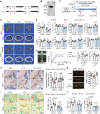
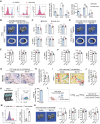
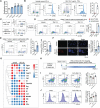
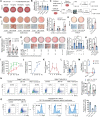
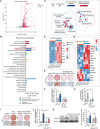

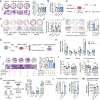
Similar articles
-
Staphylococcal enterotoxin C2 promotes osteogenesis and suppresses osteoclastogenesis of human mesenchymal stem cells.Exp Cell Res. 2014 Mar 10;322(1):202-7. doi: 10.1016/j.yexcr.2013.12.008. Epub 2013 Dec 16. Exp Cell Res. 2014. PMID: 24355808
-
Staphylococcal enterotoxin C2 stimulated the maturation of bone marrow derived dendritic cells via TLR-NFκB signaling pathway.Exp Cell Res. 2018 Sep 15;370(2):237-244. doi: 10.1016/j.yexcr.2018.06.024. Epub 2018 Jun 27. Exp Cell Res. 2018. PMID: 29940178
-
[Enhanced SEC2 mutants and their superantigen activities].Sheng Wu Gong Cheng Xue Bao. 2013 Jun;29(6):803-13. Sheng Wu Gong Cheng Xue Bao. 2013. PMID: 24063239 Chinese.
-
Antagonistic crosstalk between NF-κB and SIRT1 in the regulation of inflammation and metabolic disorders.Cell Signal. 2013 Oct;25(10):1939-48. doi: 10.1016/j.cellsig.2013.06.007. Epub 2013 Jun 11. Cell Signal. 2013. PMID: 23770291 Review.
-
Involvement of receptor activator of NFkappaB ligand and tumor necrosis factor-alpha in bone destruction in rheumatoid arthritis.Bone. 2002 Feb;30(2):340-6. doi: 10.1016/s8756-3282(01)00682-2. Bone. 2002. PMID: 11856640 Review.
Cited by
-
Advances on T cell immunity in bone remodeling and bone regeneration.Zhejiang Da Xue Xue Bao Yi Xue Ban. 2024 Aug 25;53(4):450-459. doi: 10.3724/zdxbyxb-2023-0619. Zhejiang Da Xue Xue Bao Yi Xue Ban. 2024. PMID: 39183057 Free PMC article. Review. Chinese, English.
-
T cell related osteoimmunology in fracture healing: Potential targets for augmenting bone regeneration.J Orthop Translat. 2025 Feb 4;51:82-93. doi: 10.1016/j.jot.2024.12.004. eCollection 2025 Mar. J Orthop Translat. 2025. PMID: 39991456 Free PMC article. Review.
-
Mitochondrial metabolic regulation of macrophage polarization in osteomyelitis and other orthopedic disorders: mechanisms and therapeutic opportunities.Front Cell Dev Biol. 2025 Jun 13;13:1604320. doi: 10.3389/fcell.2025.1604320. eCollection 2025. Front Cell Dev Biol. 2025. PMID: 40584964 Free PMC article. Review.
-
Continuous Oral Administration of the Superantigen Staphylococcal Enterotoxin C2 Activates Intestinal Immunity and Modulates the Gut Microbiota in Mice.Adv Sci (Weinh). 2024 Nov;11(41):e2405039. doi: 10.1002/advs.202405039. Epub 2024 Sep 9. Adv Sci (Weinh). 2024. PMID: 39248343 Free PMC article.
References
Grants and funding
- Shenyang Xiehe Biopharmaceutical Co. Ltd.
- PRP/050/19FX/Hong Kong Innovation Technology Commission Funds
- Health@InnoHK program, Innovation Technology Commission of the Hong Kong
- 82172430/National Natural Science Foundation of China
- 82272505/National Natural Science Foundation of China
- 14121721/Research Grants Council of the Hong Kong Special Administrative Region
- 14202920/Research Grants Council of the Hong Kong Special Administrative Region
- 14108720/Research Grants Council of the Hong Kong Special Administrative Region
- N_CUHK472/22/Research Grants Council of the Hong Kong Special Administrative Region
- C7030-18G/Research Grants Council of the Hong Kong Special Administrative Region
- T13-402/17-N/Research Grants Council of the Hong Kong Special Administrative Region
- AoE/M-402/20/Research Grants Council of the Hong Kong Special Administrative Region
- 09203436/Hong Kong Health and Medical Research Funds
- 08190416/Hong Kong Health and Medical Research Funds
- 17180831/Hong Kong Health and Medical Research Funds
LinkOut - more resources
Full Text Sources
Miscellaneous
